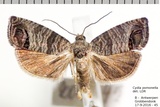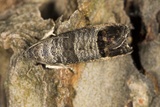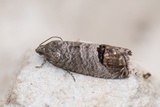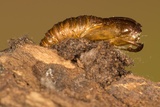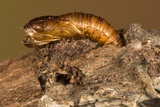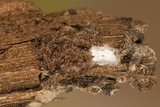Cydia pomonella (Linnaeus, 1758) Species
Last modified: Nov. 25, 2025, 12:24 p.m.
A common species throughout Belgium. Sometimes a pest in apple orchards.
Details
- Classification
- Family: Tortricidae > Subfamily: Olethreutinae > Tribus: Grapholitini > Genus: Cydia > Species: Cydia pomonella
- Vernacular names
- Fruitmot (NL), Codling moth (EN), Carpocapse des châtaignes (FR), Apfelwickler (DE)
- First mention in Belgium
- De Sélys-Longchamps E. 1844. Énumération des insectes Lépidoptères de la Belgique. — Mémoires de la Société royale des Sciences de Liége 2: 1–35. On page 21 (as pomonana). view page
- Status
-
Native
Distribution
Egg
Laid singly, or rarely in groups of two or three on fruits, stems, or leaves of the host. The flat and pinhead sized eggs are oval and translucent when first deposited. Later on they turn white.
Caterpillar
Very young larvae are white with black heads. Mature larvae grow up to 16-20 mm long with a pale pink to reddish colour. Head mottled brown and prothoracic plate & anal shield with distinctive mottled pattern.
Bionomics
The eggs are laid singly on fruit or on the upper surface of nearby leaves. Young larvae bore into the fruit within 24 hours after hatching and then tunnel towards the core where they feed on the developing seeds of especially Malus and Pyrus trees.
Larval damage to fruit is characterized by entry and exit holes, rot that surrounds larval feeding areas, and frass accumulation.
The caterpillars hibernate full-grown in a silk cocoon under the bark of the tree-trunk or in leaf litter where the pupation takes place the following spring.
The adult moths become active at dusk and are attracted to light.
Flight periods
The adults have been seen from mid-April till late September.
Observed on
- Host plant (species):
- Cydonia oblonga, Castanea sativa and Sorbus aria
- Host plant (genera):
- Malus, Pyrus, Juglans, Prunus and Ficus
The caterpillars live mainly in the fruits of Malus spp. and Pyrus spp. but can also be found on a variety of other trees.
Habitat
The typical habitat is in orchards or wherever solitary apple trees are found.
